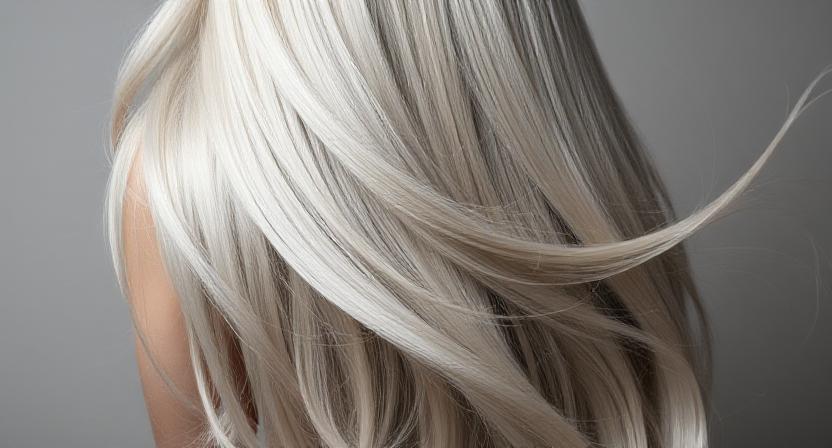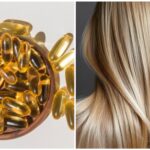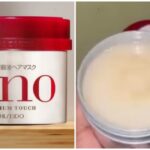Many people aspire to achieve healthy, long, and thick hair, and if you are struggling with slow growth, excessive shedding, or thinning hair, you’re not alone. The good news is that you don’t have to rely on pricey salon treatments or harsh chemical-laden products. In fact, researchers have found that there are effective natural options and holistic practices that can help restore growth and increase the density, strength, and luster of your hair.
In this article, you will discover 10 natural hair growth therapies that are based on research and will help you to grow your hair faster, stronger, and healthier, naturally.
1. Scalp Massages with Natural Oils Stimulate Hair Growth
A scalp massage feels great on its own; however, it also increases circulation to the hair follicles. More circulation equals better oxygen and nutrient delivery to your scalp, which means your hair can grow better.
The Best Natural Oils for Massage:
Coconut Oil – Helps reduce protein loss by penetrating the hair shaft.
Castor Oil – Has a high concentration of ricinoleic acid, which aids hair regrowth.
Peppermint Oil – A study in 2014 showed peppermint oil improved hair growth greater than minoxidil in mice.
Rosemary Oil – A study in 2015 found rosemary oil was equally as effective as 6 months of minoxidil (Rogaine).
How to Use It:
Daily, massage a few drops onto your scalp using a circular motion for 5–10 minutes.
You can leave it overnight, or wash after 1–2 hours.
2. Use a Rice Water Rinse for Stronger, Longer Hair
Fermented rice water has been used for centuries by the women of the Yao tribe in China. The rice water is rich in inositol, a carbohydrate that helps repair damaged hair while improving elasticity.
Research Findings:
In a 2010 study published in the International Journal of Cosmetic Science, the findings revealed that rice water helped reduce frictive forces and improved hair elasticity when compared with untreated hair.
How to Make:
Rinse ½ cup of rice and soak in 2 cups of water.
Allow to sit for 24-48 hours for fermentation.
Strain off the water and pour it over your hair after you shampoo. Allow to sit for an additional 10-20 minutes before rinsing with water.
3. Eat Biotin-Rich Foods
Biotin (Vitamin B7) is a vital component of keratin — the protein that makes up your hair strands — and it has a role in calcium metabolism. A biotin deficiency may cause hair thinning and breakage.
Biotin-Rich Foods:
- Eggs
- Almonds
- Sweet potatoes
- Avocados
- Spinach
Bonus: Adding zinc, iron, and Vitamin D is also good for your hair!
4. Limit Use of Heat Styling Tools to Avoid Damage
The more you use the flat iron, curling wand, and blow dryer, the more your hair’s proteins are breaking down and substituting away moisture, which weakens your hair and limits growth.
Professionals Suggest:
- Use heat styling no more than 1 – 2 times a week.
- Always use a heat protectant spray when using heat tools.
- Air dry when you can be patient enough.
- Why it Works: Less heat = less breakage = longer hair over time.
5. Aloe Vera Soothes and Nourishes the Scalp
Aloe Vera contains vital enzymes to benefit hair. It eliminates excess sebum, helps eliminate dandruff, and calms inflammation.
What Research Says:
Aloe contains proteolytic enzymes that mend dead skin cells on the scalp, encouraging new hair growth.
How to Use:
Take fresh Aloe Vera gel.
Apply directly on your scalp.
Leave it for 30 minutes and rinse.
For best results, use Aloe Vera 2 – 3 times a week.
6. Stop Wearing Tight Hairstyles that Pull on the Roots.
Pony tails, braids or buns that are too tight can lead to a condition called traction alopecia. Traction alopecia is hair loss around the hairline and crown.
Hair tip:
Go with loose hairstyles.
If you must use a hair tie, use a silk scrunchie instead of a band.
Get in the habit of not sleeping with your hair tied tightly.
Keeping your hairline intact contributes to fuller, thicker hair.
7. Increase Your Water Intake— Hydration Improves Hair Growth
A hair shaft is comprised of approximately 25% water. Ensuring you stay hydrated is crucial to preventing hair from becoming dry, brittle, and breaking off.
The Science:
Dehydration has critical effects on energy production and nutrient absorption in cells, which is necessary for hair follicles to produce hair.
Pro Tip:
The recommendation is to drink at least 8-10 glasses of water a day and eat foods that are high in water, such as cucumber, watermelon, and oranges.
8. A Trim Every 8–12 Weeks Prevents Split Ends Without Slowing Growth
Trimming hair does not make it grow faster, as it is commonly believed, but it (a trim) prevents split ends from going up the hair shaft and causing breakage.
Recommended Cycle:
Trim a few inches every 8-12 weeks.
Ask your hairstylist to dust your hair instead of a full cut so that you can keep more length.
Less breakage = more length retention.
9. Sleep on a Silk Pillowcase to Reduce Friction
Cotton is like a sponge and will absorb moisture from your face and your hair, and friction will create tangles, which causes breakage. Silk/satin pillowcases allow hair to remain smooth, shiny, and strong.
Benefits:
Lower the amount of breakage and frizz.
Retain moisture on your scalp and in the actual strands.
Great for curly or textured hair.
Bonus Tip: Wrap your hair with a silk scarf before lying down to an even more preventative measure.
10. Onion Juice to Regrow Hair
Onion juice contains sulfur that stimulates collagen production, enhances blood circulation to the scalp, and minimizes hair loss.
A Little Scientific Backing:
A study in the Journal of Dermatology in 2002 showed that when onion juice was applied to the scalp twice a day for four weeks that 74% of the subjects had hair regrowth.
How to Apply:
Blend and strain 1-2 onions for juice.
Once you have the juice, apply it to your scalp and leave for 30 minutes.
Rinse out with a gentle shampoo.
Note: – You can do this 2-3 times a week. The scent disappears once you wash it out.
Final Remarks
Remember, hair growth is not a race. It is necessary to be consistent using these natural methods backed by science to see changes in your hair length, volume, and health.
It is also important to remember that diet, scalp care, and lifestyle tie in together. You can cost-effectively help hair regrowth, whether it is thinning, breaking, or you just want it longer. by using these methods, you will be on your way naturally without chemical treatments.
FAQs
Q1. How long does it take to see hair growth results naturally?
It depends on your hair cycle and the regularity of your care, but with the right care, visible changes can be expected in 4-8 weeks.
Q2. Can stress cause hair loss?
Yes, because high cortisol levels from prolonged stress can interrupt the hair cycle and result in shedding.
Q3. What foods are best for hair growth?
Per the standards of hair growth, eggs, nuts, seeds, berries, spinach, fatty fish, and sweet potato are all key to promoting stronger, faster-growing hair.
Q4. Are natural remedies better than commercial products?
While natural remedies can take longer to show results, they offer a gentle and sustainable alternative without the harsh side effects of many chemicals.
















